Japan [Chiba] Beyond ordinary itinerariesvol.2 The Hokuso area in Chiba prefecture
Tradition - inheriting the spirit and soul-
2017.03.30

Walking around the town, you will be astonished to find some hip restaurants, French or Italian, and shops among wooden traditional houses. They maintained the outer part of buildings traditional and have renovated the interiors. Their quality is nothing but S.T.E., to be precise S.T.T. (Superior to Tokyo)!
The most famous tourist attraction in Chiba would be Tokyo Disney Land (even though many people do not care which prefecture it belongs to!) Beach resorts in Boso peninsula are also popular. But very few people (including Japanese) come across the kind of attractions that exist in the Hokuso area, the north-east part of Chiba near Ibaraki prefecture. Amusingly, most of the foreign visitors to Japan have visited this area because Narita Airport is there! We would like to introduce you some interesting places to visit near Narita Airport. Shisui Premium Outlets, approx. 15 minutes from the airport by bus, is the latest hot spot for those who love shopping. For those who love Japanese traditional culture, on the other hand, Narita-san Shinshoji temple, which has more than 1,000 years of history, is one of the most famous and popular temples among Japanese. <http://www.naritasan.or.jp/english/>
We visited this Hokuso area to find something extraordinary beyond the ordinary itineraries and found places which reminded us of the words of the founder of Judo, Kano Jigoro: “The forms or styles inherited from the predecessors cannot be called tradition, but their spirit and soul can.”
Sawara, the town that recovered its lost glory by inheriting a past leaders’ spirit.
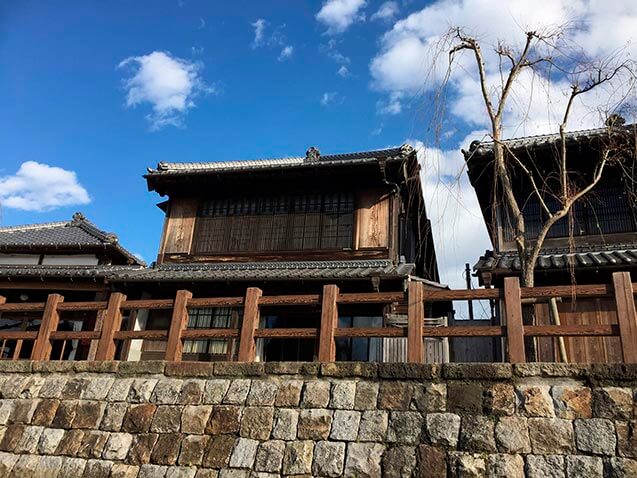
Sawara is one of the towns known as Little Edo. As Edo is how Tokyo used to be called before the modernization of the nation in the 19th century, it is like Little Tokyo. But it is absolutely not like Little Tokyo in Los Angels! It is a town that has an atmosphere that reminds us of Old Tokyo. Kawagoe in Saitama prefecture, Tochigi in Tochigi prefecture, and Sawara in Chiba prefecture are the leading Little Edo among seven that exist in Japan. These three towns have two things in common: they were wealthy due to their dealings with Edo through the waterway; and they have districts that maintain the original traditional atmosphere. Especially, Sawara was so prosperous in Edo period (1603-1868), that when the central government was in Edo, it was also called S.T.E. (Superior to Edo). People in Sawara invited master artists from Edo and there they created better works than what they had done in Edo.
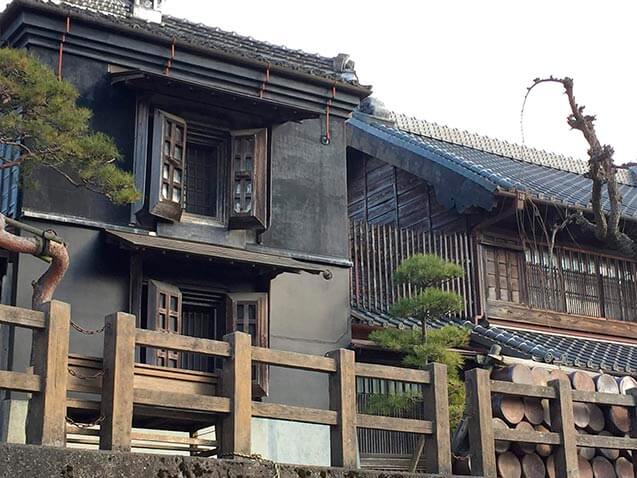
Accessing Sawara is quite simple. To access by train, take JR Sobu Line from Tokyo station to Narita and then change to the JR Narita Line to Sawara (1.5h). There are also buses that go directly to Sawara from Tokyo station. Why don’t you go and visit Sawara to experience the atmosphere of Old Tokyo?
Sawara, the place superior to Edo
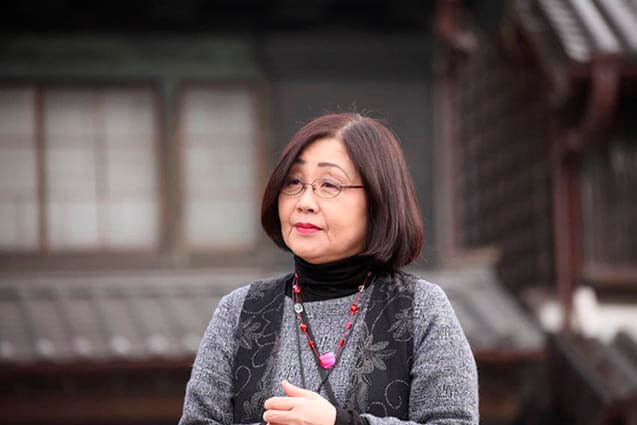
Ms. Kiyo Shiina of the Sawara Chamber of Commerce and Industry took us around Sawara and explained the history of the town. Old wooden houses and storehouses built from the 18th century to the early 20th century and old Western style houses along the Ono River (a tributary of the Tone River) and Katori Road are all well-kept. This district was designated an Important Preservation District for Groups of Traditional Buildings for the first time in the Greater Tokyo Area.
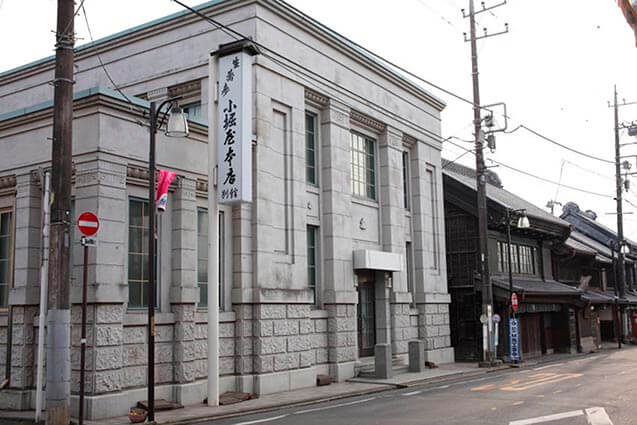
Sawara was one of the wealthiest towns to the east of Edo in the 18th century. During the 300 years that have passed, the circumstances surrounding Sawara have drastically changed. In the first place, Edo, their trading partner, was transformed to Tokyo. The transportation method has changed, from boats to trains and cars. As the main business of Sawara was transportation by boat, the use of the waterway has declined. Moreover, trends in preferred dwelling styles have shifted towards Western style houses and apartments, which are easier to maintain than their traditional Japanese counterparts. The style of shops has also changed from private shops to big supermarkets. With these big changes, it must have been so hard for the town of Sawara to keep its identity. We all know that even the buildings or facilities built for the international events with a large sum of invested money can become ruins easily if they are not in use. After the shipping business of Sawara declined, we heard, that there was a time when the Ono River was contaminated with liquid waste and garbage, and the beautiful district was nothing but a “negative legacy” which only required money and effort for maintenance. However, the people’s local patriotism brought this “dark age” to an end and made Sawara a beautiful old town again.
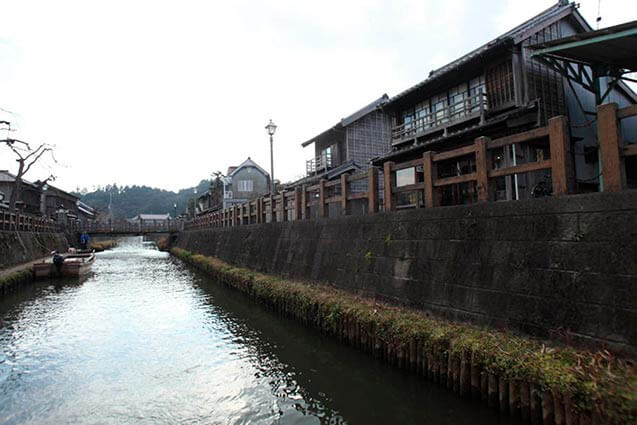
Now in Sawara you can spend some time just how you do in Venice in Italy. Of course there is no Gondola or Gondoniere, but you can see the beautiful district in Japanese-style boats guide by a man or a woman in traditional kimono. Even in cold Winter this short “cruising” is enjoyable because Kotatsu (a kind of table covered with heavy blanket with a heating element underneath) is well placed on a boat. The town can be seen differently if looked at from below with the branches of willow trees along the river swaying in the wind. You may be able to feel the slow and warm rhythm of the town during this short “cruise”.
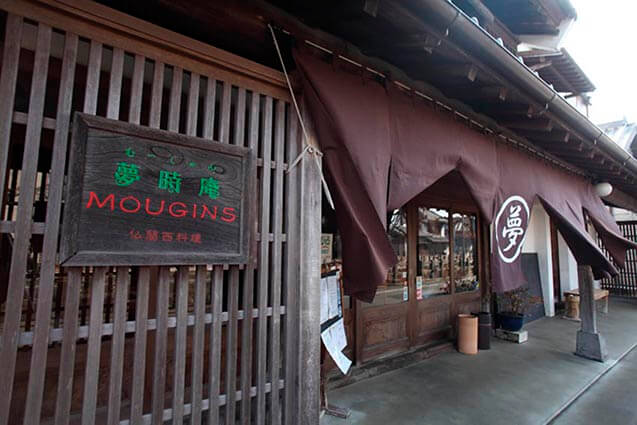
Walking around the town, you will be astonished to find some hip restaurants, French or Italian, and shops among wooden traditional houses. They maintained the outer part of buildings traditional and have renovated the interiors. Their quality is nothing but S.T.E., to be precise S.T.T. (Superior to Tokyo)!

the house of Tadataka Ino
We found the house of Tadataka Ino, where he lived from the age of 17 to 50. This house is believed to have been built before 1762 and it is one of the oldest houses remaining in Sawara. It is maintained as it used to be and is now open as a museum. Tadataka Ino is a well known person among Japanese people because we all learnt about him in history classes during Elementary School. He is well known as the man who created the map of Japan for the first time in the early 19th century, walking all the coastline of Japan, including the islands. However, very few people know about what he had done before he started his great project. He had been one of the village headmen in Sawara. Normally, the villages and cities in Japan were governed by the feudal lord samurai nominated by Shogun. But Sawara was the land directly governed by Tokugawa Shogunate and there was no samurai as the ruler. It was like an autonomous republic and the villagers corporated with each other with the leadership of headmen villagers to govern the village. Tadataka Ino was born near the coast part of Chiba and he came to Sawara to marry to a lady whose father was a leading businessman in the area and to become the successor in the family business. He was very capable in business and as a headman. He devoted himself to make the village a better place. When there was trouble, he visited villagers and placated them. At the time of the great famine (it is said that over a million people died), nobody died in Sawara thanks to his discretion. Even now the locals of Sawara love and respect him and his soul is still living in their heart.
At the time of the great earthquake in 2011, Katori-shi, the municipality that the town of Sawara belongs to, was the worst-affected area in the Chiba prefecture. Approximately 6,000 buildings were severely damaged, including many old traditional buildings. Roads were also badly damaged, distorted and caused many cave-ins. The Ono River was not an exception. The riverbanks were destroyed and the riverbed was lifted up due to the soil liquefaction. After a long time effort to revive the beautiful district, the town of Sawara was totally devastated. Even though water supply dwindled and the road was cut off, the locals got back on their feet and started to take action with the motto, “Now is the time when we should show our spirit of Sawara, the spirit of S.T.E.!” People’s state of mind was the first thing to be taken care of. And the rhythm of their festival music played that role. In May, only two months after the earthquake, when Sawara ought to have received many tourists, they called five bands to hold a charity concert for their music festival for two hours without a break. At the concert the manageresses of Sawara who were victims of the earthquake dressed up in kimono properly stood holding a donation box. Audiences, including victims, donated money for other victims. In July the festival was held and people pulled the festival floats only where the roads were less damaged. With the spirit inherited from Tadataka Ino and their local patriotism, the town of Sawara was revived again.
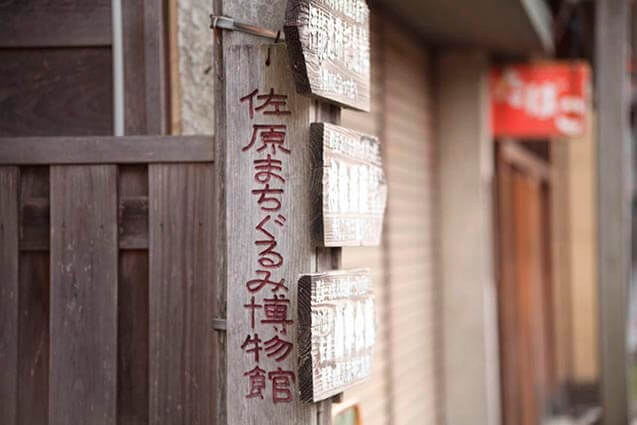
Most of the old buildings are a “still-living legacy” and are still used as normal shops. But some of them are called “Town museums”.
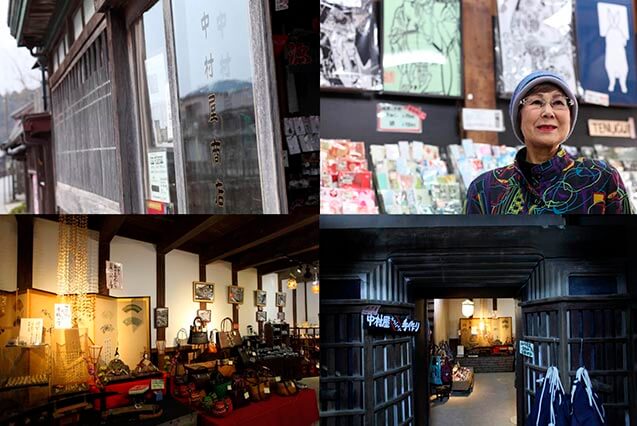
Unlike ordinary museums, there are no entry charges or curators. Town museums are just normal shops but with treasures inside, like old warehouses, hidden gardens, antique tools, which visitors can see. The Town Museum Network is organized by local female proprietors. They work as presentators of the history of Sawara as well as manageresses of shops.
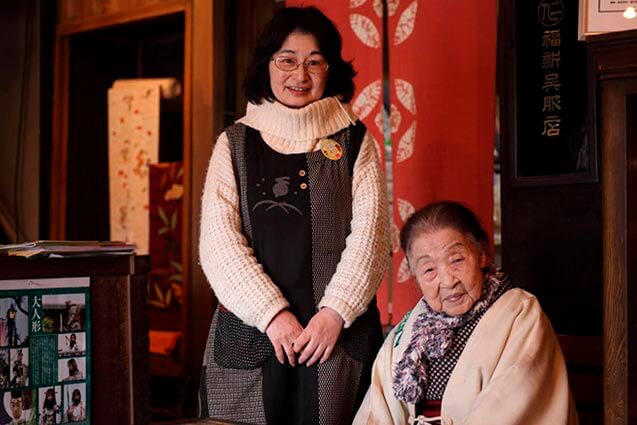
Mrs. Kiiko Hiratsuka, the 7th manageress (right) and Mrs. Tomoko Hiratsuka, the 8th manageress (left) of Fukushin kimono shop
We visited one of “Town museums”. The manageresses showed us their old warehouse in the back of the shop. They said some part of the main buildings and the warehouse collapsed at the time of the great earthquake in 2011. At least 25 out of 93 buildings in “Important Preservation Districts for Groups of Traditional Buildings”, were listed as “must repaired”, and their shop was not the exception. Thanks to the governmental and municipal subsidies, people’s donations, and the financial back up through World Monuments Fund, the restoration was been completed a few years ago.
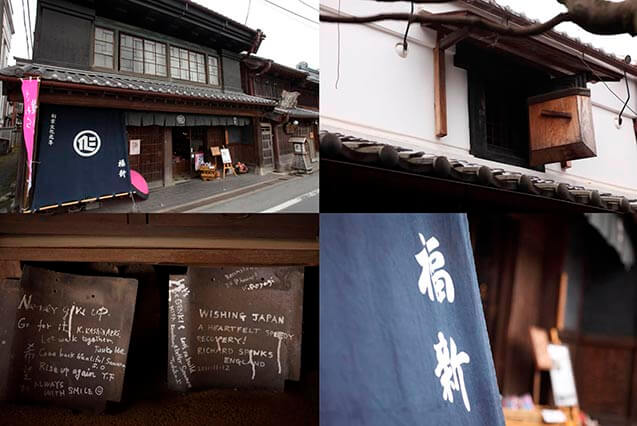
We are facing very big hurdle to protect legacies from the past. Some of the challenges are: that the quality of things deteriorates with time; that changes in people’s life style and way of thinking makes conservation less of a priority; and natural hazards can damage fragile historical sites. But no mountain is too high! The peoples’ local patriotism evokes the admiration from visitors, and this admiration enlarges locals’ love and pride for the area. The hurdle may become smaller when this positive spiral occurs. Moreover, legacy will be just a museum matter if only the forms are maintained. The historical district in Sawara is more than that because the locals have inherited the spirit Tadataka Ino who saved the town of Sawara in the past.
Sawara is very near to Narita Airport, just half an hour by car. We would like to suggest you to reserve one day for a visit in Sawara before you leave Japan. It would be a good idea to see a place that was said to be superior to Tokyo after you enjoy cutting edge culture in present Tokyo.
Fukushin kimono shop
i505 sawara ,Katori-shi, Chiba prefecture
http://m-kaze.com/sawara/fukushin.html
https://www.facebook.com/sawarafukushin/
Sake Breweries which connect the inherited soul of the founders and the future in Kouzaki and Shisui
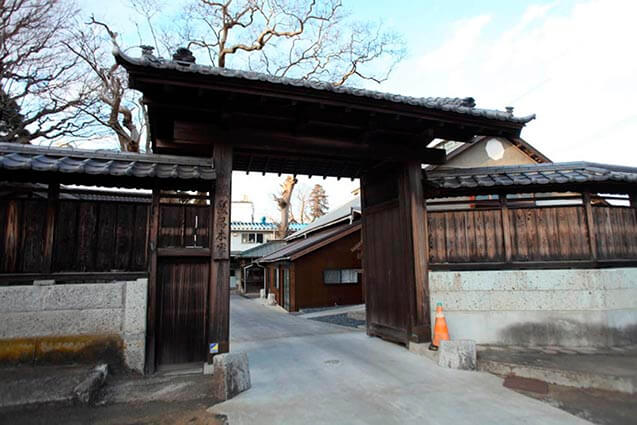
We visited two sake breweries where visitors can see the process of sake brewing. Hyogo, Kyoto and Niigata prefectures are the Top three Sake producing areas in Japan. Near Tokyo, the Saitama prefecture is the leading area. The Chiba prefecture, on the other hand, is well known for soy sauce producing, but there are more than 40 sake breweries. Among them Nabedana Honten produces the largest amount of sake in Chiba.
Nabedana Honten in Kouzaki-machi, Katori-gun
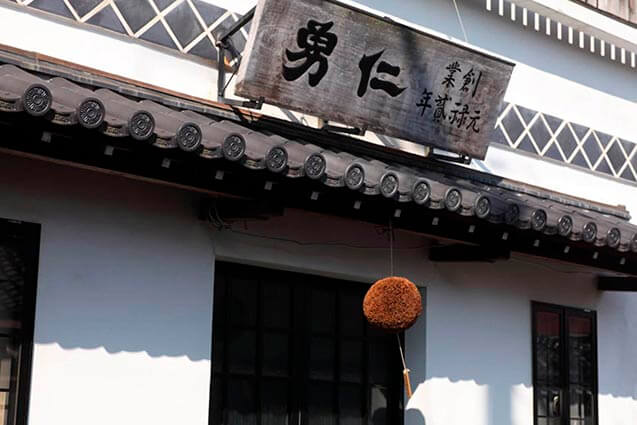
Nabedana Honten (trans. main shop) was founded in 1689. The current president is the 19th generation. The founder started to produce sake in front of the Narita-san Shinshoji temple and moved to this place after the modernization of the nation in the 19th century.
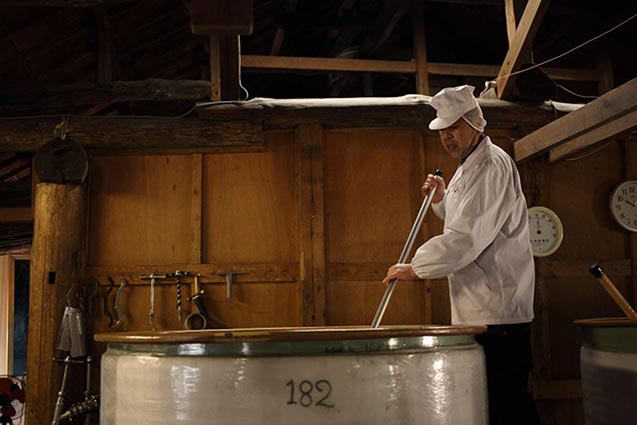
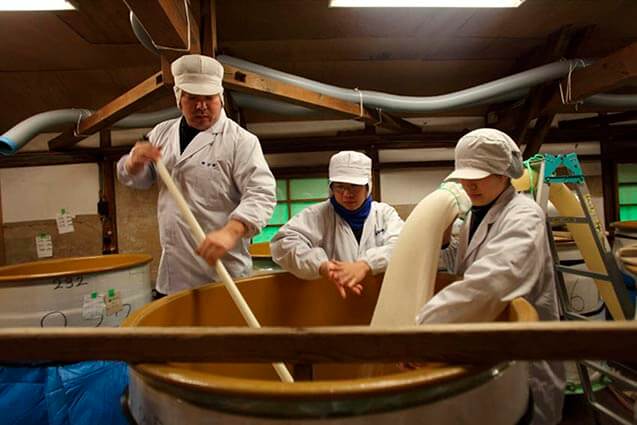
Sake producing is done from the end of September to April.

Their major series of sake is called Fudo. Fudo is taken from the name of a Buddha, Fudo Myoo, which the Narita-san Shinshoji temple worships. Fudo Myoo literally means “Unmovable Wisdom King” and it is known as a fire god. Miyama-nishiki of the Akita prefecture is the rice used for Fudo but they are also making sake with the local harvested rice. As sake is drunk during meals, food is an important factor which affects the taste of sake. The best way to to spend blissful moment is to choose the local sake for the local dishes made with local ingredients and local flavoring.
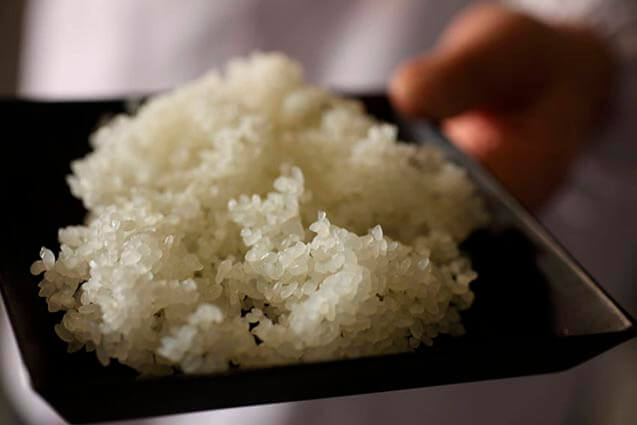
In Nabedana Honten you can see all the processes of sake brewing, rice steaming, malted rice making, yeast starter making, fermentation process, and pressing. (Reservation is required.) Mr. Akio Miyano, who is responsible for sake brewing, guided us and explained the sake making process. In his explanation we noticed from his choice of words that he regarded the microorganism that converts rice to sake as his fellow workers, which was so impressive.
Nabedana, Kouzaki Shuzo
1916 Kouzaki-Honjuku, Kouzaki-machi, Katori-gun, Chiba prefecture
☎ 0478-72-2255
Iinuma Honke, Shisui-machi, Inba-gun
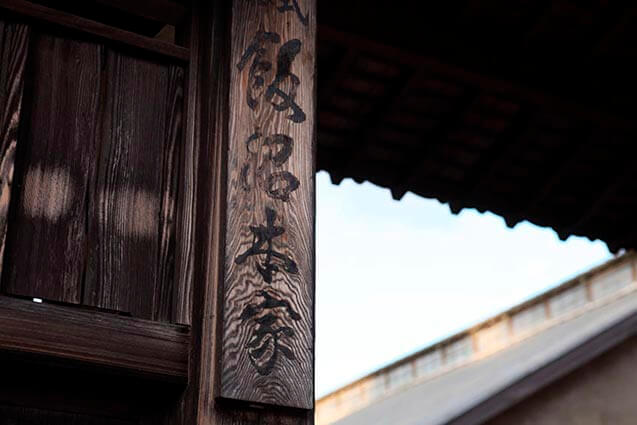
The name of the town where Iinuma Honke is situated is called Shisui. When it is written in Kanji, Japanese characters, it means “the spring of sake,” which was derived from the local legend. (cf: Kanji is one of the three writing systems in Japan. Hiragana and Katakana are phonograms like alphabets, while Kanji is ideographs.) Iinuma Honke was founded more than 300 years ago and now it is a sake brewery that leads in Sake Tourism. According to Mr. Kazuyoshi Iinuma, the current Executive Sales Manager, Sake Tourism offers visitors the chances to not only see the process of sake making but also offers sake-related entertainment.
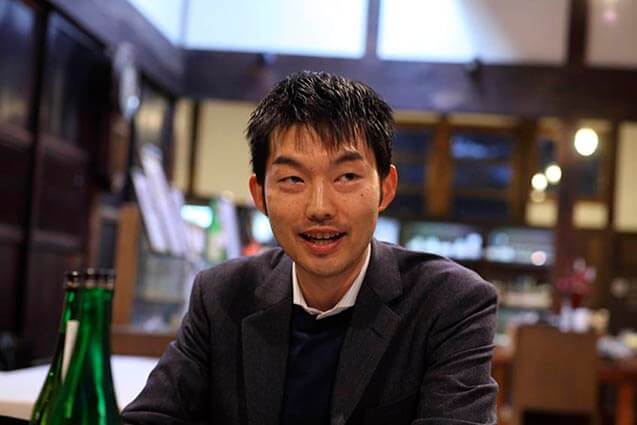
Mr. Kazuyoshi Iinuma, the current Executive Sales Manager
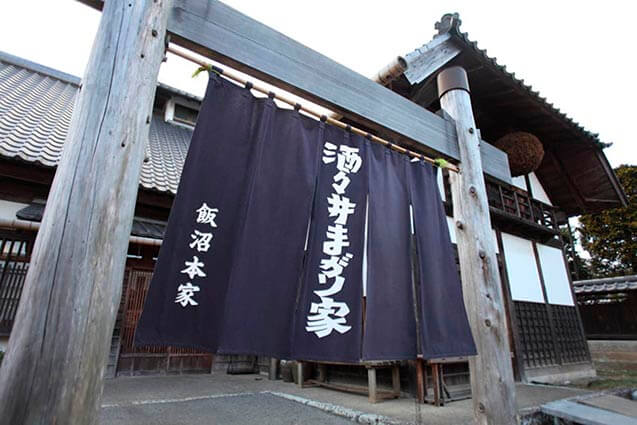
In Shisui Magariya, a composite facility (restaurant + gallery + shop), you can experience sake tasting and try various dishes cooked with sake. Iinuma Honke also has farms where rice for sake, blueberries, plums, Yuzu sitron, kiwi fruits, and so on are cultivated. Needless to say, it provides ingredients, but also visitors can experience harvesting here. The tour of the sake brewing facilities is also entertaining in Iinuma Honke. The guided tour with an admission fee includes a lecture on sake making by a brewery worker.
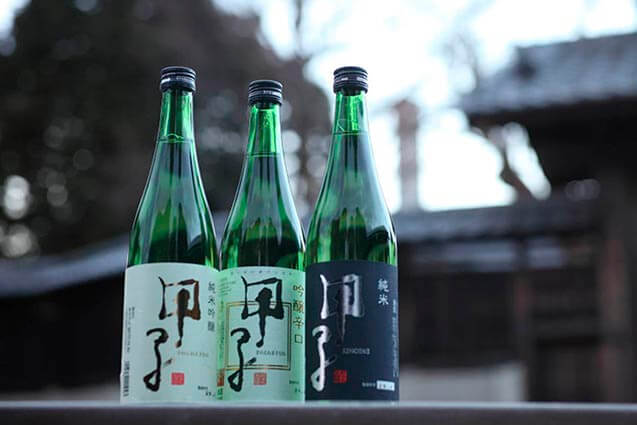
In every Spring they hold an event called “Magariya Festa” where people can experience rice planting. Visitors can have a barbecue, too. At the end of November, they hold a festival of new sake. Iinuma Honke is a sake brewery with a long history and tradition but at the same time it creates a new business of sake connecting the sprit of the founder and the future. It goes beyond the definition of sake brewer which makes the legendary spring of sake greater, which is proved by the fact that it has more than 50,000 visitors a year.
Iinuma Honke Co.,LTD.
106 Mabashi, Shisui-machi, Inba-gun, Chiba prefecture
☎ 043-496-1111
About the project “Beyond ordinary itineraries”
vol.1 The Chichibu area in Saitama prefecture
A great attempt to make a new tradition in the Chichibu area
-Venture Whisky, Ichiro’s Malt-
A great attempt to make a new tradition in the Chichibu area
-Maple Base-
A great attempt to make a new tradition in the Chichibu area
-House of Miyamoto, an old farmhouse-
A great attempt to make a new tradition in the Chichibu area
-Chichibu Meisen House-
(The Chichibu area in Saitama prefecture Booklet PDF)
(The Chichibu area in Saitama prefecture Booklet PDF [for printing])
vol.2 The Hokuso area in Chiba prefecture
Tradition - inheriting the spirit and soul-
(The Hokuso area in Chiba prefecture Booklet PDF)
(The Hokuso area in Chiba prefecture Booklet PDF [for printing])
vol.3 Niigata prefecture Tsubame-Sanjo
The place for Artisans who breathe life into their craft
vol.4 Niigata prefecture Niigata city
The Power of Fermentation Can Also Connect People, Events and Products
(Niigata prefecture Niigata city&Tsubame-Sanjo Booklet PDF)
(Niigata prefecture Niigata city&Tsubame-Sanjo Booklet PDF [for printing])
vol.5 Kasumigaura and Mt.Tsukuba area in Ibaraki Prefecture
Fascination of the area is like a constellation, it comes out when the dots are connected.
(Kasumigaura and Mt.Tsukuba area in Ibaraki Prefecture Booklet PDF)
(Kasumigaura and Mt.Tsukuba area in Ibaraki Prefecture Booklet PDF [for printing])
This project is supported by the Kanto Bureau of Economy, Trade and Industry.









